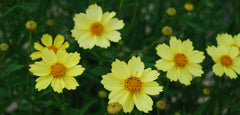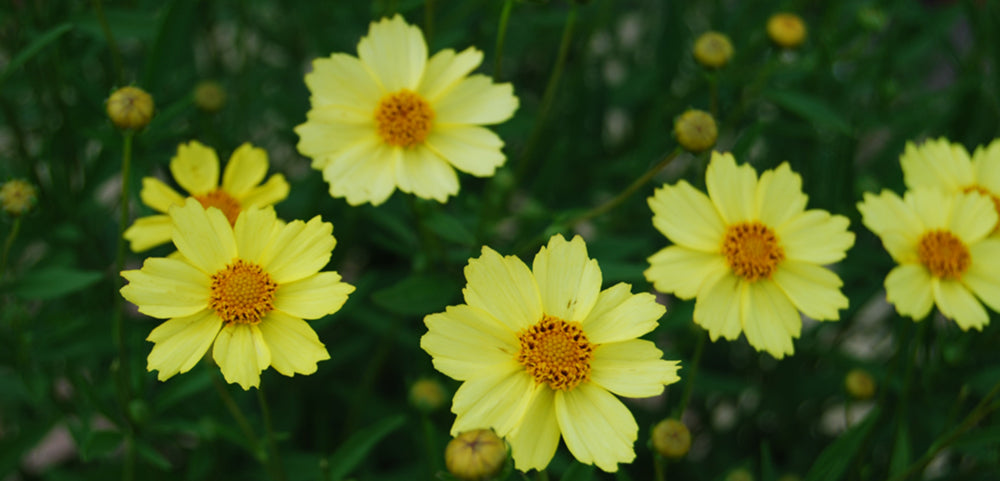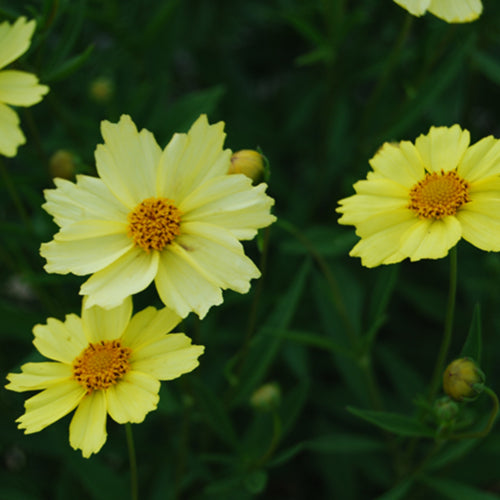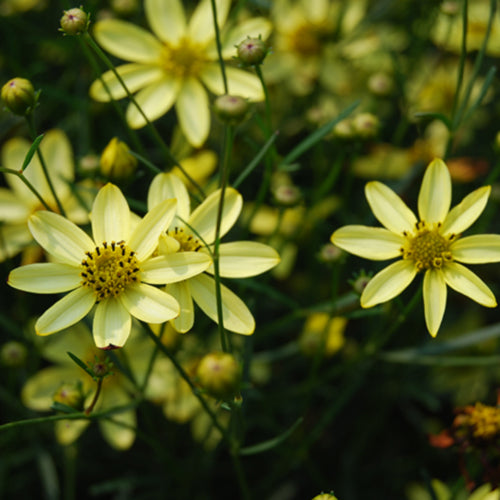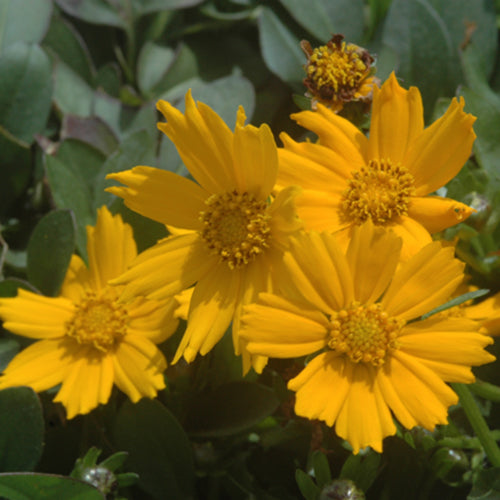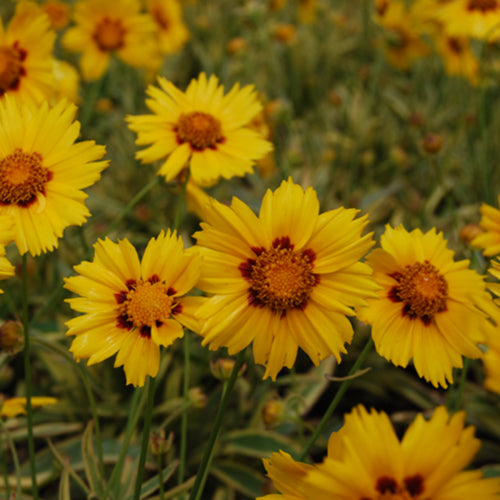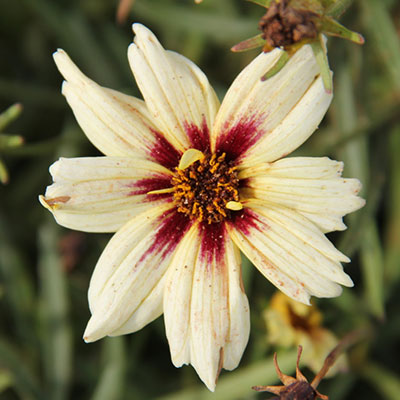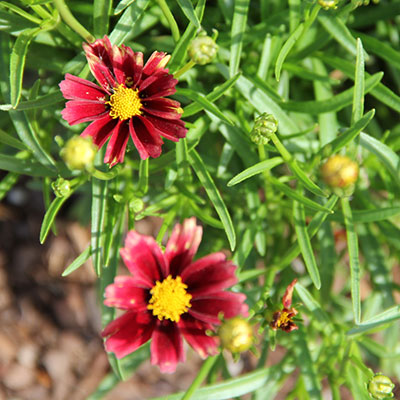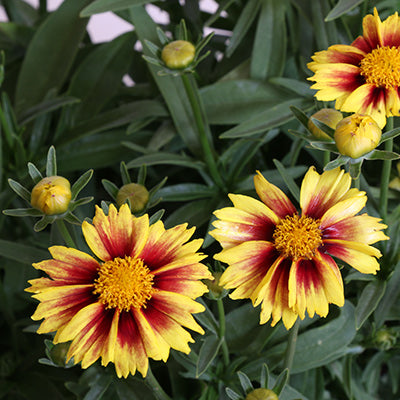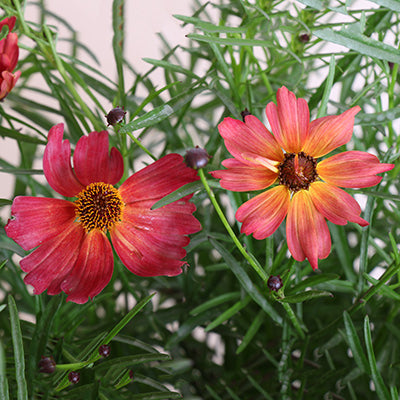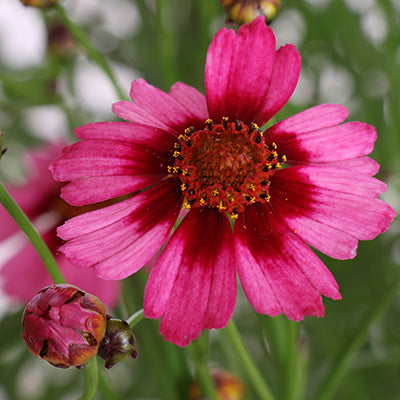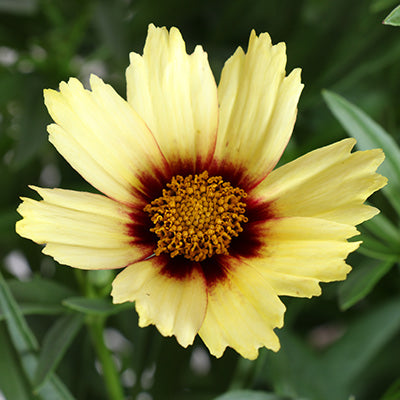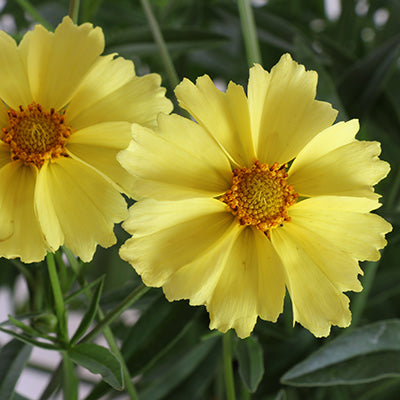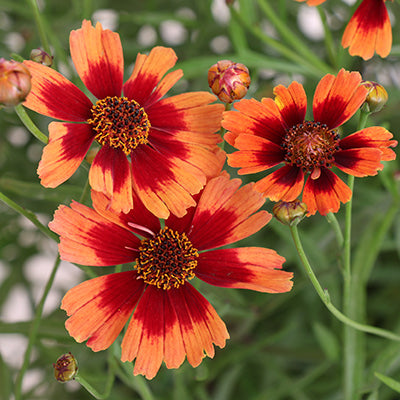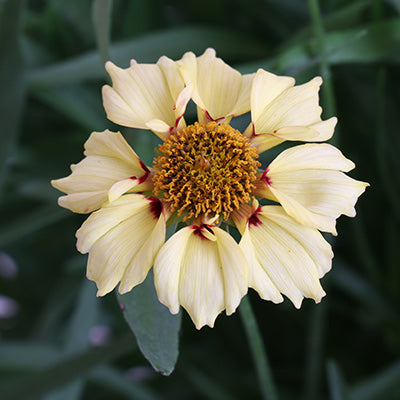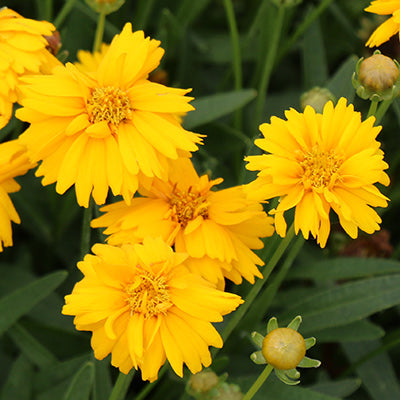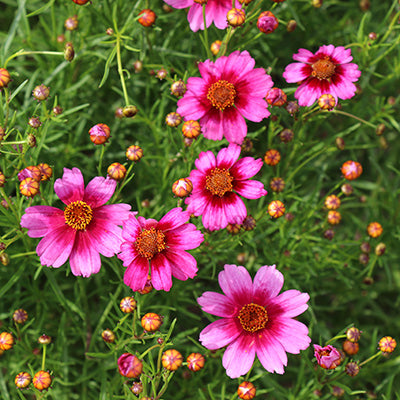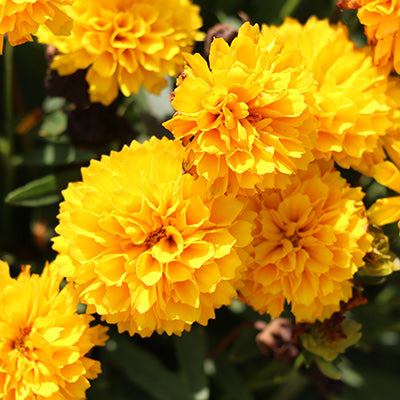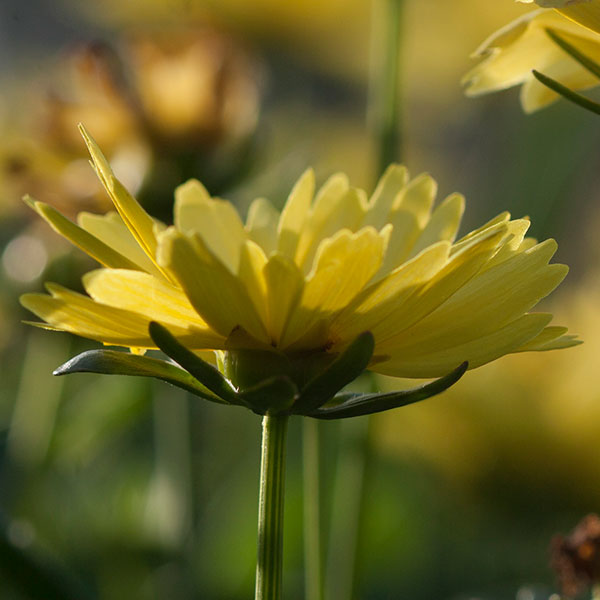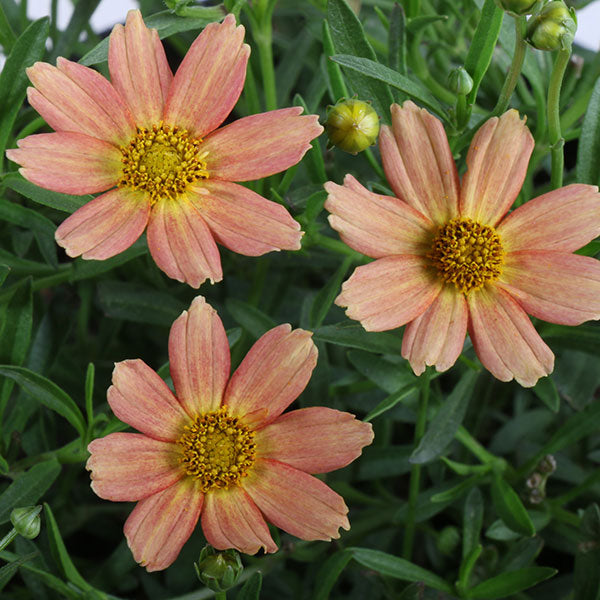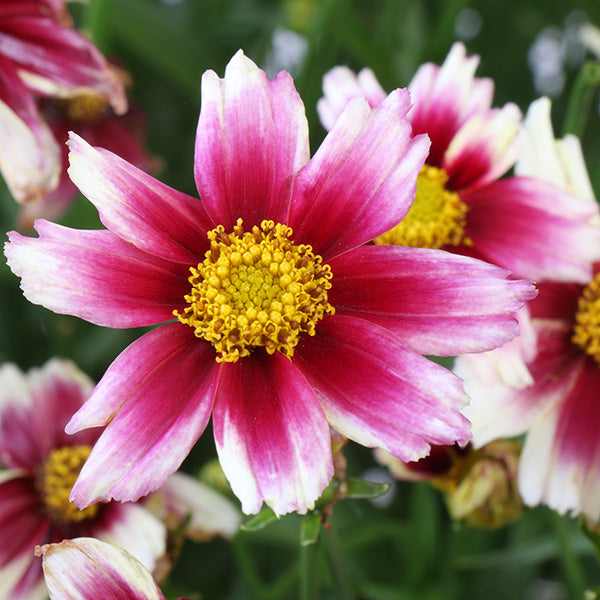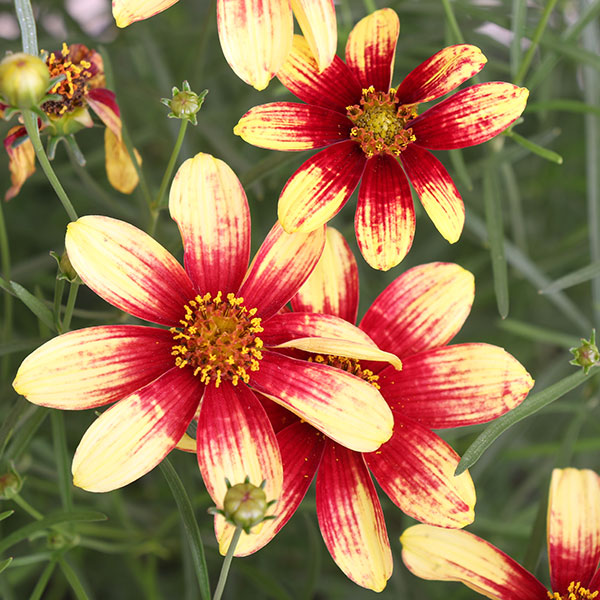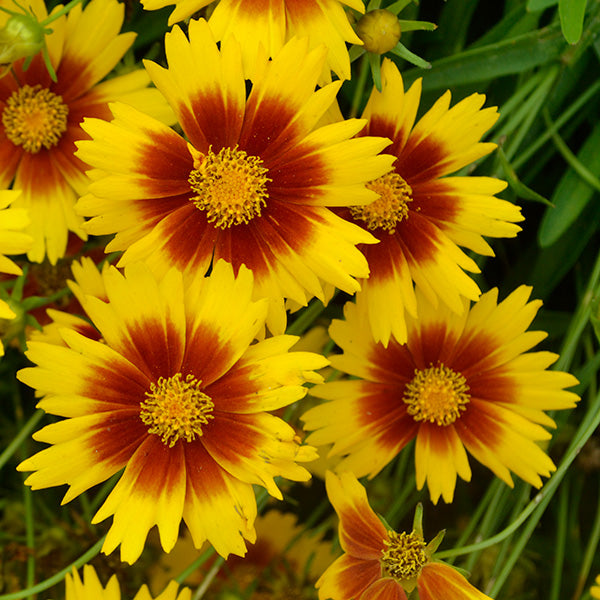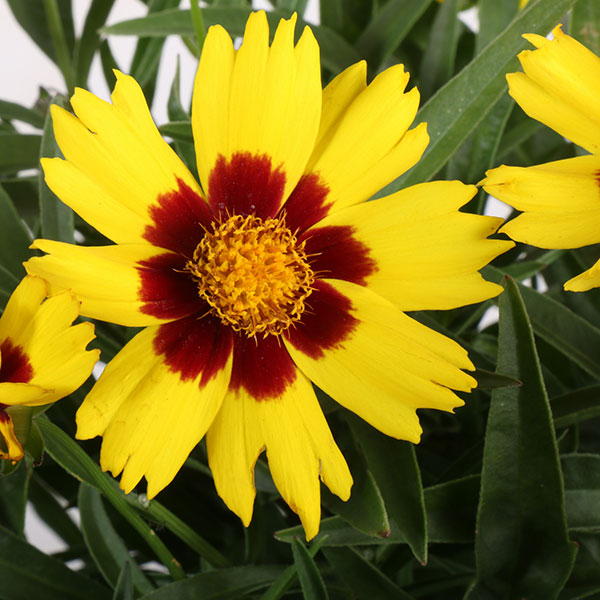Coreopsis (Coreopsis spp.)
Coreopsis Plant Features
Amp up the color in your flower borders with coreopsis. This amazing native plant, occasionally called tickseed, develops mass quantities of yellow, orange, rose, lavender, white, or bi-colored flowers through the early summer. Coreopsis is sun-loving, drought-tolerant and highly attractive to hungry butterflies. Most coreopsis varieties grow 18 to 24 inches tall, but dwarf forms that grow only 6-12 inches tall are also available. Use dwarf coreopsis in rock gardens or at the edge of path or walkway. Hardy from zones 4-9.Coreopsis Questions?
Email us and one of our perennial flower experts will get back to you.
Coreopsis Growing Instructions
Plant coreopsis in a sunny spot that receives at least 6 to 8 hours of direct sun a day. Coreopsis prefers a rich, well-drained soil, but will be fine in poorer, drier conditions. To promote additional blooms, deadhead the plants by clipping away faded flowers. Coreopsis is relatively deer resistant and works well in fresh-cut arrangements. Water whenever the soil feels dry to the touch.Coreopsis is not intended for human or animal consumption.
-
Water
Medium water needs
-
Light
Outside: Sun
-
Colors
Orange
Pink
Variegated
White
Yellow
-
Special Features
Attracts butterflies
Deer/rabbit resistant
Groundcover
Super-easy to grow
Complement your Coreopsis
Lamb's EarThe silver foliage of stachys provides a cool contrast to the brighter blooms of coreopsis.
Bee Balm
Planted together bee balm and coreopsis will attract lots of butterflies and other pollinators.
Feather Reed Grass
Native to the American prairie, coreopsis looks perfectly at home interplanted with ornamental grasses such as feather reed grass.
